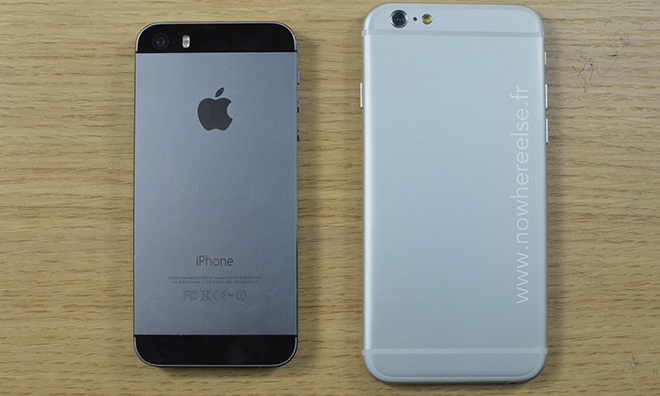Due to supply constraints, Apple's rumored 4.7-inch "iPhone 6" handset is not expected to come with optical image stabilization (OIS) components, one analyst says, though yields may be high enough to include the part in a larger 5.5-inch variant.
In a research note obtained by AppleInsider, noted KGI analyst Ming-Chi Kuo predicts the smaller 4.7-inch version of Apple's expected iPhone 6 will use a middle-mount open-loop voice coil motor, not an OIS VCM. The part is said to be an updated version of what is being used in the iPhone 5s.
Kuo sees Apple deploying an OIS VCM in the 5.5-inch iPhone 6 to further differentiate the "phablet" from the company's other handset offerings. With superior image quality, the larger iPhone can be marketed as a higher-end device with a substantially different feature set. The analyst estimates the OIS part comes at a $3 or $3.5 premium over the iPhone 5s VCM.
Despite the lack of OIS in the 4.7-inch handset, the middle-mount VCM is said to outperform the current iPhone 5s in terms of focus speed and power efficiency. Put up against competing smartphones, however, the open-loop VCM Apple plans to deploy is deficient. Handsets like Samsung's Galaxy S5 and the upcoming Mi4 from Xiaomi feature closed-loop VCM designs that track focus points for quick focusing and power-efficient operation.
While focus and stabilization hardware may differ between the two models, Kuo is confident that both iPhone 6 versions will use an 8-megapixel Sony sensor customized especially for Apple. Combined with Apple's vertical software and hardware integration, the complete package will likely be a market leader when the device sees launch later this year, Kuo said.
Apple has traditionally shied away from battling rival manufacturers on specs like megapixels, instead focusing on finer details to eke out the highest performance possible from existing platforms. For example, the camera sensor used in the iPhone 5s boosted pixel size to 1.5 microns in diameter, increasing the module's light gathering capabilities by 33 percent compared to the iPhone 5. The change was accompanied by a faster f/2.2 lens group that offered improved low-light performance and higher image quality.
 Mikey Campbell
Mikey Campbell







-m.jpg)






 Christine McKee
Christine McKee
 Marko Zivkovic
Marko Zivkovic
 Mike Wuerthele
Mike Wuerthele

 Amber Neely
Amber Neely
 Sponsored Content
Sponsored Content
 Wesley Hilliard
Wesley Hilliard










65 Comments
It really bothers me that you make the title of the article seem like fact. I'm fine with rumors and I like to hear opinions but you should state this as a "Rumor:" before your sensationalist headline. I'm stepping off my stump now.
Why did I get a notification about this story? This does not seem like that big of a story to warrant a notification to let me know that it's breaking news.
Nice. Glad there will be some type of hardware differentiation. I wonder if we will see the name 'iPhone Pro' make an appearance. I don't necessarily like the name, but if Apple can offer other forms of hardware differentiation like this, then the name may fit.
Total nonsense.
There’s nothing “professional” about a device too large to be used.
[quote name="Tallest Skil" url="/t/180884/apples-5-5-inch-iphone-6-to-sport-optical-image-stabilization-4-7-inch-version-will-not#post_2555141"] [COLOR=000000]There’s nothing “professional” about a device too large to be used.[/COLOR] [/quote] Well, nothing screams pro louder than arriving with a caddy. ---- Other than that, OIS as a differentiator makes as much sense as this bunk about the iPhone 5c having no Siri they told us last year. Every single year they bombard us with these shortage stories, and every year initial supply is better than the year before.